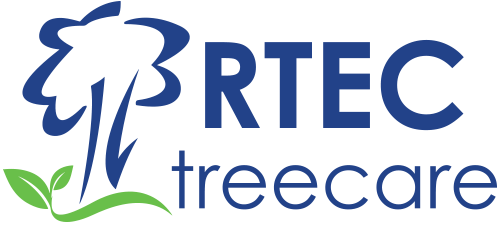The infamous emerald ash borer (Agrilus planipennis) is one of the most destructive tree pests in North America. This metallic green jewel-like beetle is anything but a treasure to have. Emerald ash borers (abbreviated EAB) are an invasive species that attack and kill all varieties of North American ash trees, which have no natural resistance against the pest. When you consider that a few years ago there were more ash trees in the USA than there are people in the world – that’s a lot of trees at risk! Not only is the value of the tree lost, but the costs of removing these fragile trees can get expensive. The idea of protecting these trees can be daunting, but not to worry, RTEC is here to help one yard at a time!

The emerald ash borer is native to many parts of Asia and was first detected as an invasive species in the United States in 2002. Since it was first discovered in Michigan, the EAB has spread to over 36 states and has destroyed hundreds of millions of ash trees in its wake.
Due to their wood-boring nature, these shiny green bugs tunnel through wood for most of their life. They spend months inside tree bark cutting through the connective tissues that transport water and nutrients throughout a tree. Once a tree is infected, it will eventually become strangled from its inability to move nutrients throughout itself. This means that the best way to save your tree is to get a preventative plan before you notice an infestation. Below are four foolproof steps to protecting your trees from emerald ash borers!
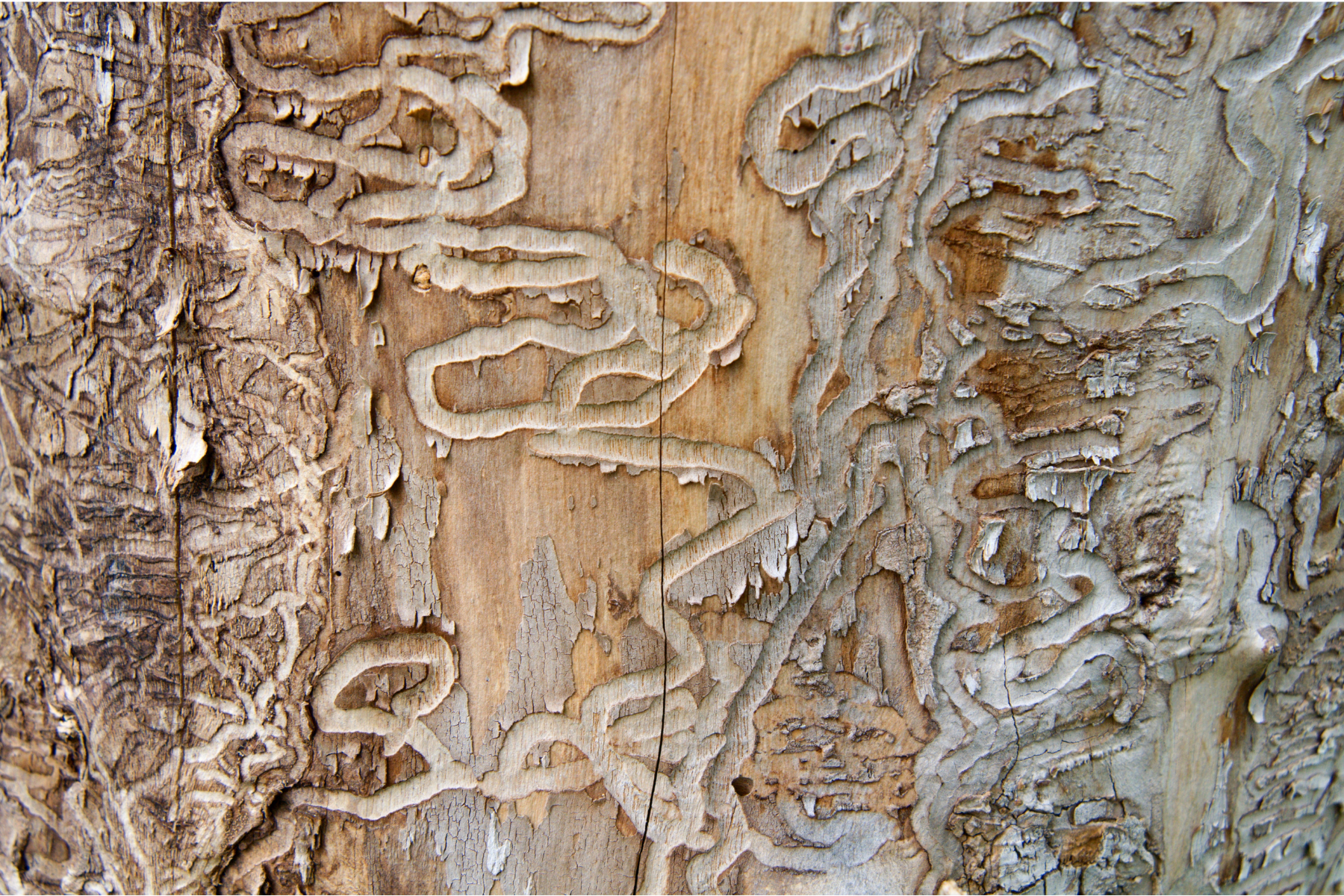
Step One: Identifying An Ash Tree
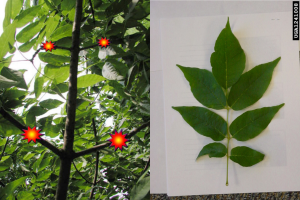
It may seem silly, but this is an important first step that makes or breaks the process! We don’t expect everyone to memorize all the tree species in their backyards (that’s what you have RTEC for!), so here is a helpful guide to identifying ash trees on your property.
- Look at the leaves. All ash trees have compound leaves (i.e., multiple leaflets attached to a middle vein. Ash trees have at least 5 leaflets per leaf).
- Look at the branches. Ash tree branches come in pairs! Branches and buds form directly opposite each other.
- Look at the bark. Ash tree bark has a shallow diamond-shaped pattern along the trunk.
Step Two: Checking for an Emerald Ash Borer Infestation
If you’re lucky, you will never see any of these signs on your ash tree. When it comes to ash trees, preventative care is the only care. After identifying that you have an ash tree, the next step is to check for these signs of an infestation.
Signs of Emerald Ash Borers:
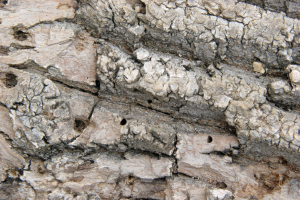
- Canopy thinning/canopy dieback that occurs from the top down can be a sign of an emerald ash borer infection.
- “D” – shaped holes in the outer bark. As adult beetles emerge from the bark, they create a perfect capital D-shaped hole that has become a tell-tale sign of EAB.
- Later stages may include sprouts growing from the bottom of the tree trunk or even from the roots.
- Increased woodpecker activity – they are trying to eat the bugs inside!
Step Three: Get A Preventative Plan
Didn’t notice any of those symptoms? Great! Now we need to protect your tree by enrolling in a preventative plan. Do not wait until your tree is showing signs of infestation. Once an ash tree is infected, it will die.
As a matter of fact, the Nation Park Service claims that emerald ash borer has nearly a 100% mortality rate of killing a tree once infected. This means there are only two real choices – protect your tree with a preventative treatment before it gets invaded or wait until the tree is infested and has to be removed due to irreversible decline.
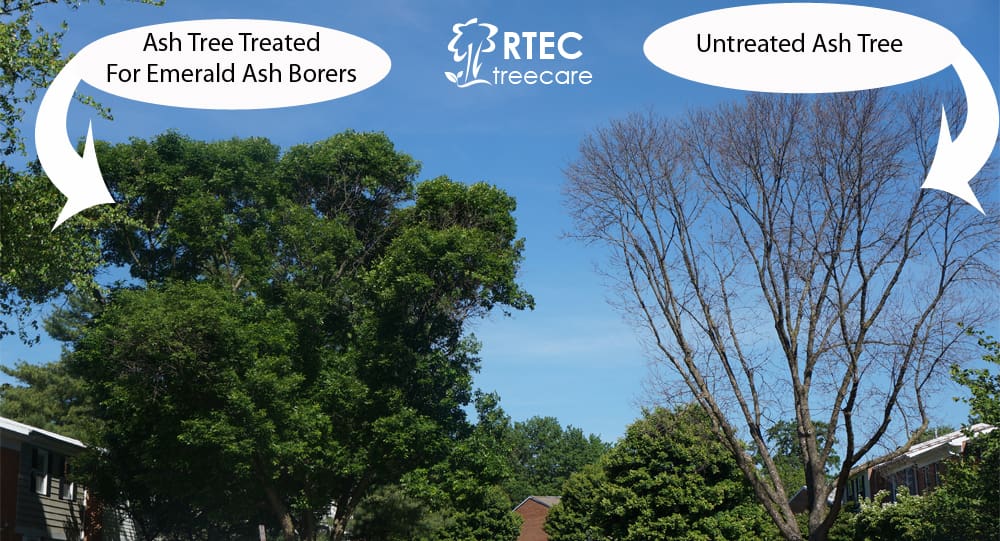
Step Four: Remove Infected Trees
Did you notice any signs of an emerald ash borer infestation on your tree? Unfortunately, it is probably too late to save your ash tree. That means it is time to call one of our certified arborists to evaluate the tree for removal. The longer a tree is left to decline, the more hazardous and costly it becomes to take down safely. Fortunately, our arborists and highly skilled crews are experts at safely removing trees, and our specialty equipment allows us to remove from even the trickiest of yards!
At RTEC Treecare, we are doing our part to combat the emerald ash borer throughout NOVA by partnering with Arlington County to treat ash trees throughout the city! We encourage you to take on the responsibility to protect your trees and with our help, we will reduce the spread of this killer pest.

Don’t wait until it’s too late.
Enroll in our Emerald Ash Borer Program Today!
A preventative plan is the only way to save your ash tree from the fatal emerald ash borer.
